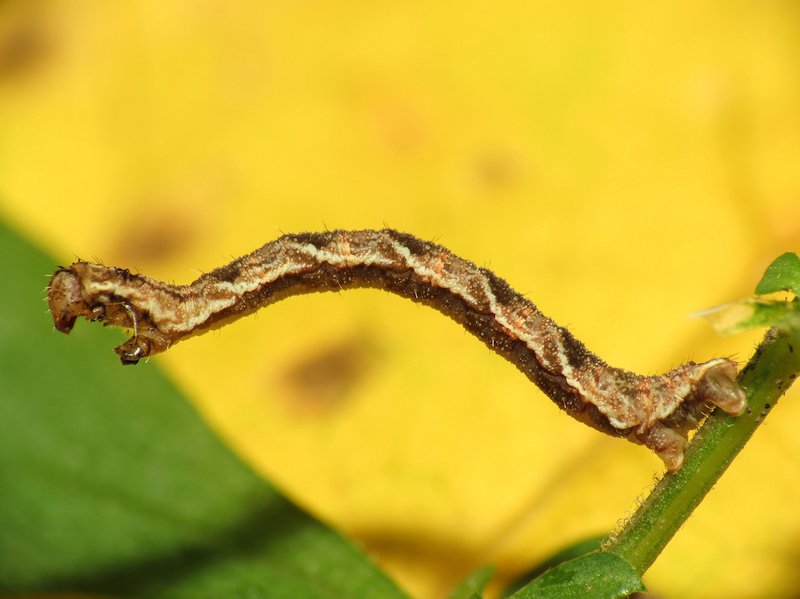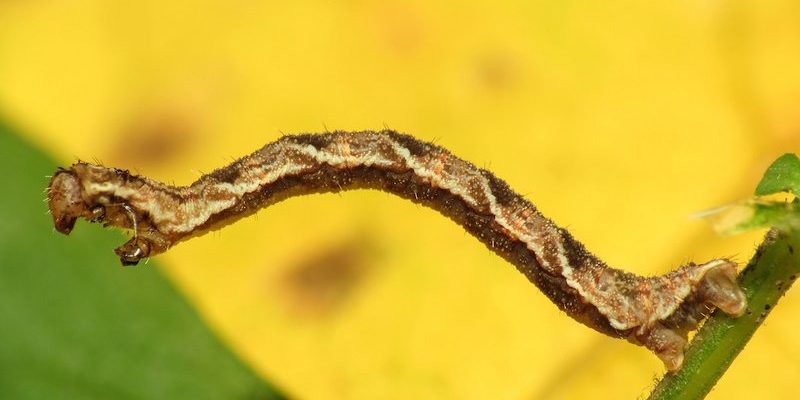
Think of inchworms like nature’s little barometers. They show up at specific times, signaling changes in the environment, just like your remote control signals your TV to change channels. And just as with electronic devices, certain **triggers** prompt these inchworms to emerge and thrive. In this article, we’ll uncover the fascinating world of inchworms, what influences their seasonal outbreaks, and how you can prepare for them.
What Are Inchworms?
You might be wondering, “What exactly is an inchworm?” Well, inchworms are actually the larvae of certain moth species, primarily from the family Geometridae. They’re called inchworms because of their unique way of moving. They “measure” their way forward by contracting and expanding their bodies, making them look like they’re inching along. It’s almost like they’re doing a little dance, but honestly, it’s more of a wiggly crawl that’s kind of cute.
These caterpillars can vary in color, from green to brown, which helps them blend into their surroundings. This camouflage is essential for their survival as they’re often prey for birds and other insects. Beyond their adorable name and appearance, inchworms play a significant role in the ecosystem—they help break down plant matter and become food for other animals.
The Life Cycle of Inchworms
Understanding the life cycle of inchworms helps explain their seasonal outbreaks. These creatures start their lives as eggs laid on leaves and branches. Once they hatch in spring, they begin to munch on the foliage around them, which is why you’ll often see them in gardens during this time.
As they eat, inchworms grow rapidly, molting several times before they enter the pupae stage. This phase is when they begin to transform into adult moths. The entire cycle—from egg to adult moth—can take just a few weeks, depending on environmental factors. Typically, you’ll spot these larvae in late spring and early summer, which is their peak season for feeding and growing.
What Triggers Their Outbreak?
You might be curious about what exactly triggers inchworms to appear in those larger numbers. Well, a combination of factors plays a role, including **temperature, food availability**, and even **predation levels**.
– **Temperature:** As the weather warms up in spring, it creates an ideal environment for inchworms to thrive. They are cold-blooded creatures, so a few weeks of consistent warmer weather can trigger their activity levels.
– **Food Availability:** Inchworms need plenty of vegetation to survive. When trees and plants start to leaf out in spring, they find abundant food sources. This abundance promotes their growth and reproduction, allowing them to explode in number.
– **Predation Levels:** If natural predators are low in an area, inchworm populations can flourish. Fewer birds or beneficial insects mean more inchworms will survive to maturity.
The Role of Weather Patterns
Weather patterns can also signal the arrival of inchworms. Think about it: after a wet winter, you’ll often see a richer growth of plants in spring. This growth provides a robust buffet for hungry inchworms.
Heavy rainfall can initially wash away some eggs, but once things dry up, the remaining inchworms have plenty to eat. Moreover, warmer-than-average years tend to lead to more pronounced outbreaks. Conversely, late frosts can set inchworms back, causing their populations to be less numerous.
Understanding these weather-driven factors can help gardeners anticipate and prepare for potential outbreaks in their own yards.
Impact on Gardens and Plants
Now that we’ve covered what triggers inchworm outbreaks, let’s talk about their impact on gardens and plants. While inchworms are essential for the ecosystem, they can wreak havoc on your precious plants if their populations explode.
When these caterpillars munch on leaves, they can defoliate entire trees or shrubs, which can stress the plants and even lead to their deaths. It can feel pretty disheartening to see your garden turn from lush to bare in a matter of days.
If you notice a lot of inchworms, you might want to take action. Consider introducing natural predators—like birds or beneficial insects—into your garden. You could also hand-pick the inchworms or use organic pesticides as a last resort. Remember, the goal is to reduce their population without harming the environment.
How to Manage Inchworm Populations
If you find yourself facing an inchworm outbreak, you’ll want to know how to manage their populations effectively. Here are some practical steps:
- Monitor Your Garden: Regularly check your plants for signs of inchworm activity, like chewed leaves or the worms themselves.
- Encourage Natural Predators: Attract birds by setting up feeders or planting flowers that support beneficial insects.
- Hand-Picking: If you have a small garden, you can find and remove inchworms by hand. Just make sure to wear gloves!
- Organic Pesticides: If the infestation is severe, consider using organic solutions that are less harmful to the ecosystem.
These methods can help you manage inchworm populations while still keeping your garden thriving.
Inchworms are fascinating little creatures that provide insight into environmental changes. Their seasonal outbreaks are triggered by a mix of temperature, food availability, and weather patterns. While they’re essential players in the ecosystem, they can also pose challenges for gardeners. By understanding what triggers these outbreaks and how to manage their populations, you can enjoy your garden without the worry of inchworm invasions.
So, next time you spot one of these little crawling critters, remember the role they play in nature and the importance of keeping an eye on their populations. With a little attention and care, you can maintain a beautiful garden, even in the face of nature’s little challenges. Happy gardening!

